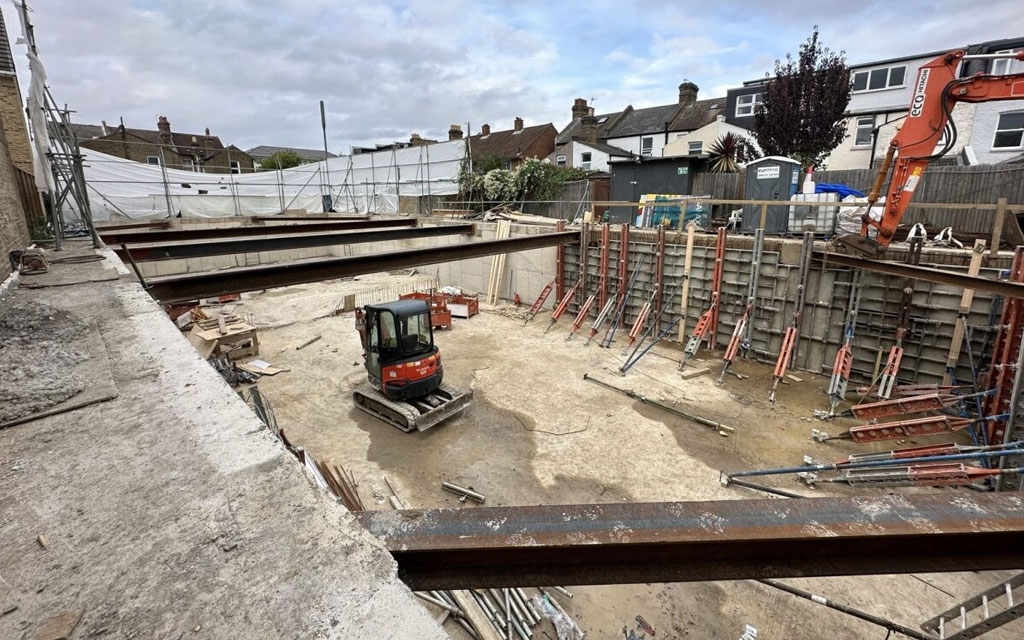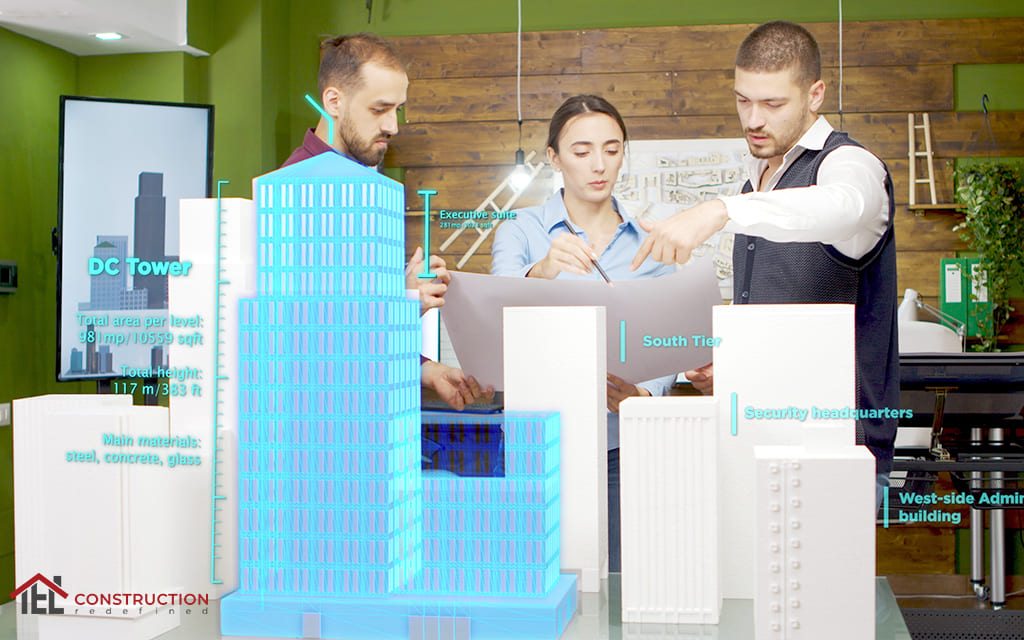The Rise of Modular Construction in the UK: Benefits and Challenges
Imagine constructing a home assembled from pieces built at a different place.
Yes, it is true. Just like in your childhood memory, you restocked and tiled block after block to make your dream castle. A similar thing happens now.
This is modular construction and a step closer to next-gen construction.
When a building is manufactured in modules prepared at a different place, it’s called pre-fabrication that rises modular method of construction.
Modular Constructions and Pre-Fabrication in the UK
The construction industry in the United Kingdom has been reinforced over the last decade.
Since the introduction of modern home designs and modular construction methods, the demand for homes and other wider concerns hit a greater improvement.
This shows how fast-paced the country has modernized itself with demand.
Imagine rebuilding a building nine times in seven years. Would it even be possible?
Yes, there is a workplace that is shifted into malls and then now they are on the other side of the country transformed into residential.
You can build, rebuild, relocate a structure without design destruction.
The significance of modular construction, it gives you freedom.
What is Modular Construction: Definition!
When parts of a structure are designed in a controlled manner, in a factory or manufacturing industry, the process is called modular construction. These building components are then shifted to the site for complete formation.
Why Modular Construction is Important in the 21st Century?
From the POV of construction companies London, 2 billion tons of waste comes from destroying buildings.
- As of 2018, this industry has contributed 117 billion pounds to the UK’s economy (which is such a huge amount!).
- 13 per cent of UK citizens run construction and manufacturing services, which are around 343, 000 total in numbers.
- 7 per cent of UK natives have their career in this sector, making up approx. 2 million jobs.
Despite all this growth and success, the industry sometimes lacks in some aspects of certain projects. It includes timely deliveries, sustainability & environment safety, product wastage, lack of labour and many more.
This was mainly seen in the housing construction sector, and with modular housing construction, these drawbacks can be quickly resolved.
Construction takes place off-site; pre-fabrication plays the biggest role here.
Types of Modular Construction: 2 Main Categories!
Modular construction can be categorized into many types.
👉 Component Construction, Volumetric Modules, Panelized Construction, and Hybrid Construction are categories based on how much material is prepared off-site.
Here, are two important types you need to know:
I. Permanent Modular Construction
➤ The process:
designing prefabricated modules off-site -> delivering to the site -> fitting to create a permanent building.
Permanent Modular Construction (PMC) involves assembling modules and building blocks in the factory environment for permanent construction. PMC is durable and has impressive longevity as they are designed for long-term solutions.
➤ Examples of Permanent modular construction:
residential spots, hospitals, malls, apartments etc. (anything permanent)
Where is the permanent modular construction method used?
This manufacturing style is used for projects including single, double, or multiple stories.
II. Relocatable Modular Construction
➤ The process:
designing complete or initial modular units -> delivering to the site -> fitting to create a temporary building.
Relocatable Modular Construction (RMC) involves assembling modern construction units (entirely or some modules) in the labs and then fitting them for temporary structures. RMCs are created in such a way they are easily relocated and moved to a new place after a span.
➤ Examples of Relocatable modular constructions:
Disaster relief medical spots, temporary classrooms, event structures, and sales offices (any emergency services structure).
Advantages of Modular Construction: Top Benefits!
Looking forward to studying the modular construction benefits? We have covered major positive changes brought by this new operation.
👉 Modular construction speeds up tasks, saves time and brings productivity
When modules are prepared in the laboratories and factories, the site is prepared in the meantime. It speeds up construction by about 50-60%.
Buildings are completed in half the amount of time than traditional construction methods. It builds a great portfolio, and you gain early returns as well.
👉 Quality of life and Buildings get polished with modular house construction
Modern homes constructed with modular methods are built with advanced techniques, improved designs and practical planning. It enhances our lifestyle.
Likewise, high-quality materials are used in producing prefabricated units which elevate structure, life, aesthetics, and finishing.
👉 Modular Housing Construction is Accessible to Residents Living in Remote Areas
Locations which are far away have fewer resources, and where people are unaware of new trends are remote places. Here, modern homes are less likely to be adapted due to unavoidable causes.
With modular prefabricated construction, these people get access to modular structure solutions. Isn’t it the best thing?
👉 No Delays Due to Heavy Snow, Rain, Or Storms with Modular Builds
With modular home and building construction, the architect gets the freedom of work flexibility. Regardless of the weather conditions, they continue fabricating and fitting modules in factories.
Subsequently, engineers and the team get enough time to deliver projects on time.
👉 Modular Building Construction Do not Need Much Storage Space
Usually, construction sites are busy and crowded due to large storage materials, concrete mixture, mortar etc. which causes clutter and toughness in moving around.
With the rise of modular construction companies in the UK, sites are starting to get cleaner. Also, all sources are placed in a single place which eases the process.
👉 Least Errors & Design Failures, More Material Strength & Customer Satisfaction
Against design complexity, each component is inspected before the final delivery. It reduces errors and major failures in modules.
Besides, the newest machines ensure material strength that helps in incorporating better longevity. Hence, modular construction projects bring more customer contentment.
§ Supports sustainability, and the environment by saving resources and climate
Unlike regular construction techniques where loads of construction material are wasted and hence harm the ecosystem, modular construction designs structures in a controlled way.
Thus, Wood and Timber are potential parts of modern construction in the UK, which supports sustainability, and optimized recycling.
👉 UK Modular Construction Provides Safe Working Conditions to Labor
On-site buildings are somewhat dangerous, and any mishap can occur. Labor works with heavy machinery, and tools and climbs on ladders when dealing with height.
Designing modules in factories is a safer choice. It minimizes accident risks and does not involve working with heights and sharp tools on-site.
👉 Modular Construction Methods Results in Handsome Cost-Saving Amounts
Since the task speeds up, is pre-built, saves natural resources, involves recycling, and reduces waste and labour cost, it saves huge amounts of money.
Money is saved largely by reducing construction time, revisions on error fixing, labour tasks under controlled conditions and using ideal logistics.
Do you want to know about Offsite Prefabrication advantages?
- Have a look at the benefits of prefabrication in modern projects.
Challenges of Modular Construction: The Tough Side!
Positive and Negative are sides of the same coin.
With the admirable benefits of modular constructions, some challenges come along: –
1. Transportation Costs of Different Types of Modular Construction
The cost of transporting loads, versatile modules and large-scale projects to different locations increases when travelling. Also, there is a risk factor of damage.
This is the main challenge modular construction companies face during tough projects.
2. Permission and Approval Concerns Before Modular Constructions
Starting with modular house construction is not a cup of tea. Architects need to undergo many permissions from local and state building departments.
Sometimes, it seems a complicated procedure for contractors and builders.
3. Fewer Supplier Options in Modular House Structures Designs
Modular construction is a great thing but not many businesses men started designing components that go smoothly in the process. It could be the biggest challenge for construction companies.
It builds pressure on builders to choose the ideal supplier who is trustworthy.
4. No Modifications in Design Once the Module is Completed
Traditional builds can be modified at the moment if the client wants changes which is hard to achieve in prefabricated modular units once they are finalized in industries.
This could be a matter of stress for certain customers who want further customization.
Take Your Next Modular Building Project: With UK’s Best Construction Company
Finding a reliable, talented and trustworthy modular construction company is also a challenge. Let me do half of your task.
With TEL Construction comes complete satisfaction with building structures whether it’s a residential, apartment or business room. We are your partners in excelling at modular construction in the United Kingdom.
We strictly follow quality assurance policies, reduce carbon emissions, recycle waste and effectively use natural resources while manufacturing.
Besides, our health & safety standards on work sites and in the industry keep our labour and workforce out of risk. We deliver projects with maximum efficiency and ON TIME!
Visit TEL Construction to Contact for more information.
The Conclusion
Twenty years from now, maybe the office you are sitting in, does not exist, it might have converted into a school or biggest business model.
Modular construction buildings are a quick way forward to a designing future with less wastage and more sustainability.
We should not forget that this up-to-trend technology construction method holds the capacity to reshape the entire construction industry.
Contact the expert builders. Ring us on 020 8158 4006. Send us an email at support@telconstructions.co.uk.
























